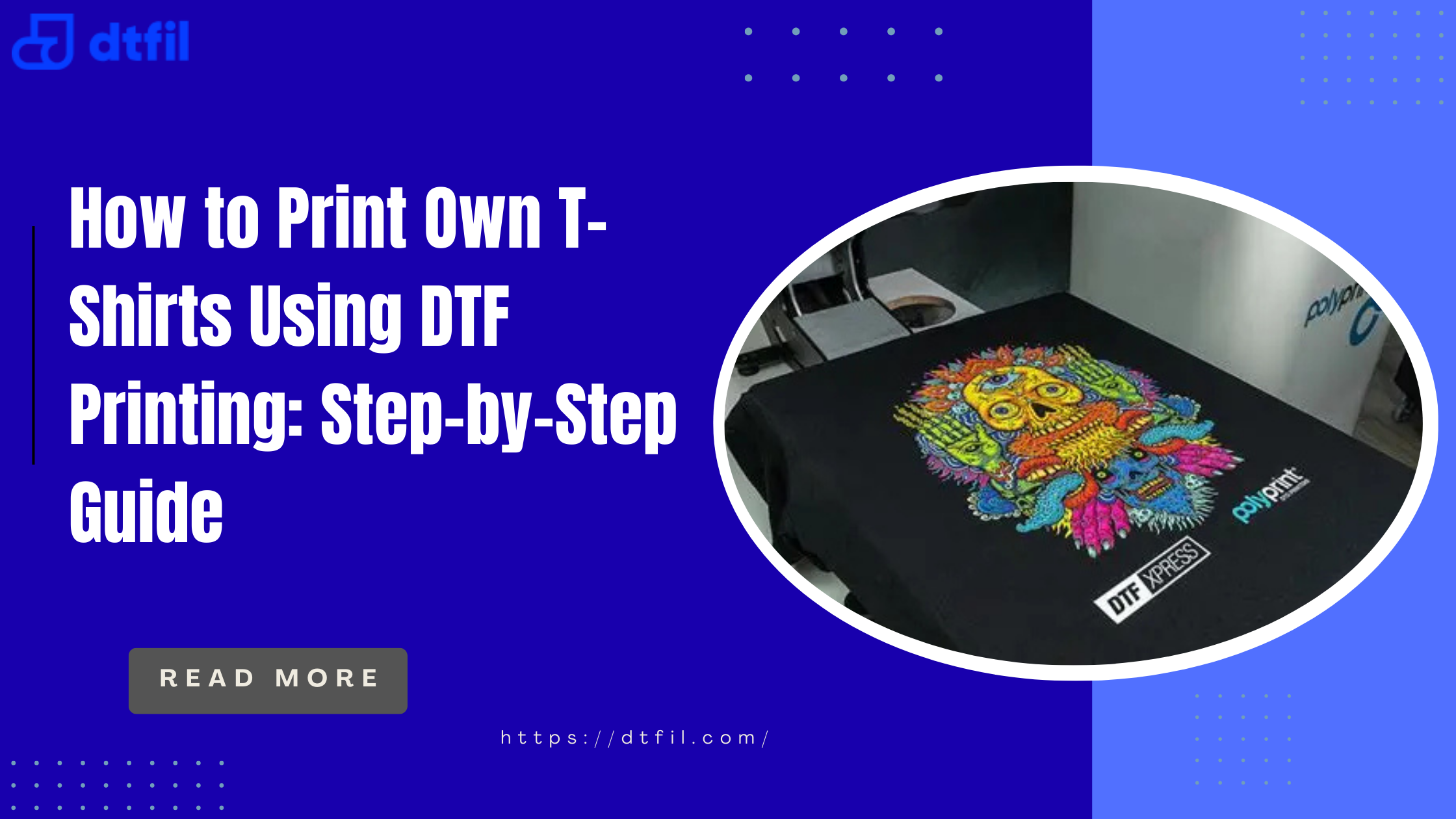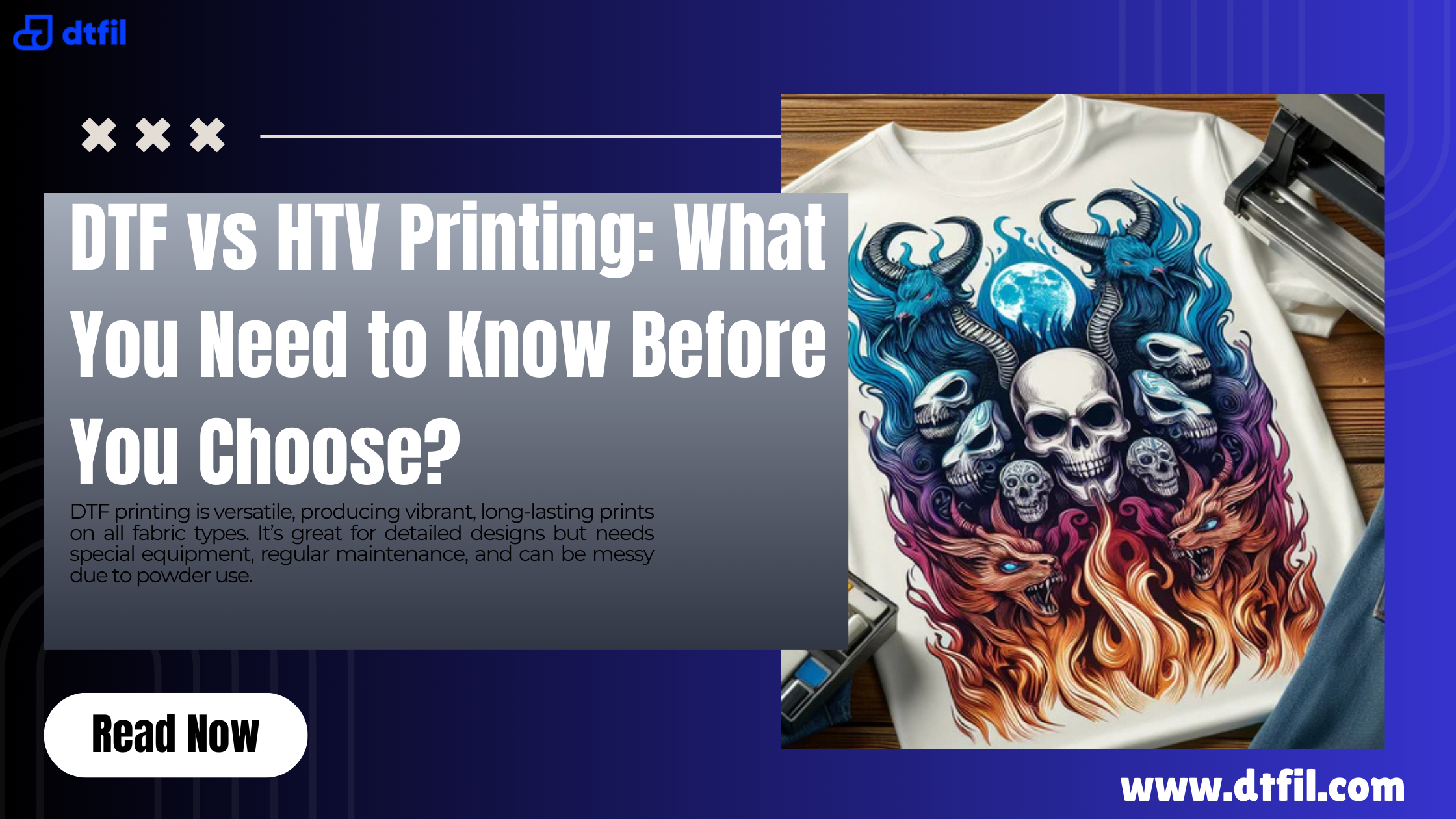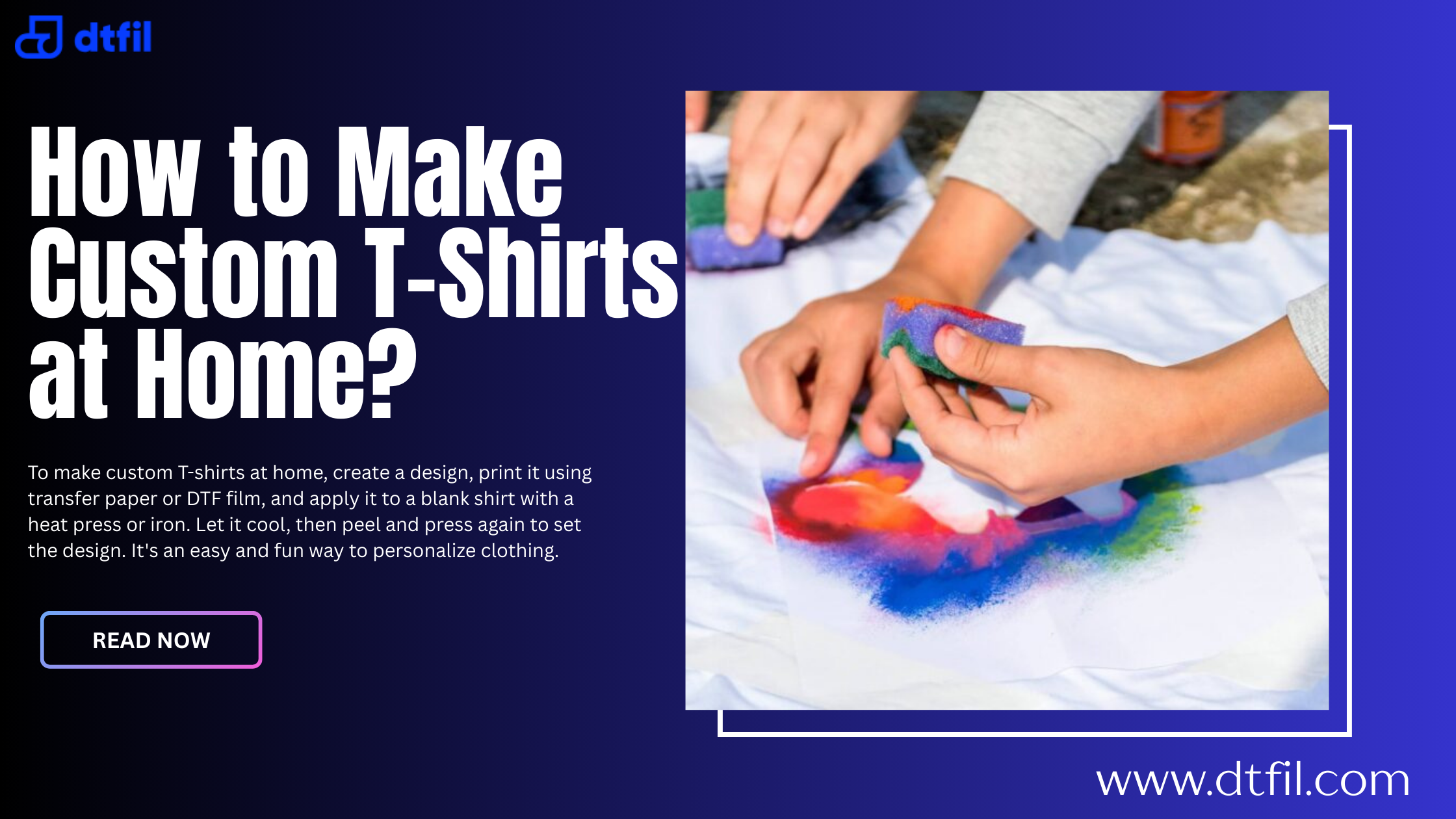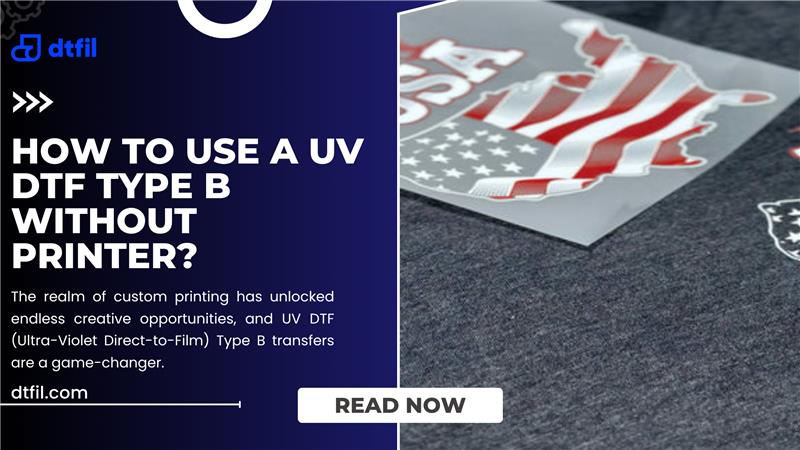In the world of custom printing, few innovations have made waves like Direct-To-Film (DTF) technology. Whether you're starting your small business, want to personalize apparel, or just love DIY crafts, learning how to make DTF transfers opens up a world of vibrant possibilities.
If you're curious about how to make DTF transfers at home or wondering if your inkjet printer could be part of the process, this beginner-friendly guide is your one-stop solution. Let's break it down—step by step.
What is a DTF Transfer?
A DTF (Direct-to-Film) transfer is a relatively new and innovative printing method that allows you to print full-color designs onto a special PET film, which can then be transferred onto a wide variety of fabrics and surfaces using heat and pressure.
Unlike traditional methods such as screen printing or vinyl cutting, DTF doesn’t require pre-treatment of the garment or weeding of the design. That means fewer steps, less mess, and a much smoother workflow.
Why Choose DTF Over Other Printing Methods?
The rise of DTF printing is no accident—it offers a host of advantages over other popular techniques like sublimation, screen printing, and heat transfer vinyl (HTV). Here’s why many creators and small business owners are switching to DTF:
-
Unmatched Fabric Versatility: DTF can be used on a wide range of materials—cotton, polyester, spandex, canvas, and even leather. This makes it ideal for custom apparel businesses that want to diversify their offerings without investing in multiple printing systems.
-
No Pretreatment Needed: Unlike DTG (Direct to Garment) printing, which requires pretreating the fabric to accept the ink, DTF skips that step entirely. This saves time and labor, especially when producing large quantities.
-
Incredible Color Accuracy: With the combination of CMYK and white ink layers, DTF prints are vibrant and bold, with excellent opacity—even on dark-colored fabrics. Your designs pop with rich detail and clarity.
-
Cost-Effective for Small Runs: Screen printing becomes expensive and inefficient for small quantities due to setup costs. DTF, on the other hand, is perfect for short-run and on-demand printing without sacrificing quality.
-
Durability and Washability: Once transferred, DTF prints hold up extremely well over time. They remain flexible, resist cracking, and stay vibrant even after multiple washes.
What You’ll Need to Make DTF Transfers?

Before learning how to make your own DTF transfers, gather these essentials:
-
A compatible DTF printer for beginners (or modified inkjet printer)
-
DTF transfer film
-
DTF ink (CMYK + white)
-
DTF paper
-
Hot melt adhesive powder
-
Heat press
-
Software for DTF design online (like Photoshop or Canva)
-
A lint roller or cleaning tool
Also read: How Much Does DTF Printing Cost?
Step-by-Step: How to Make DTF Transfers
Here’s a simple and clear breakdown of the process:
1. Create Your Design
Use your preferred design software to craft your artwork.
-
Ensure it’s high-resolution (300 DPI recommended).
-
Use transparent backgrounds for better final results.
-
Explore templates on DTF design online platforms for quick options.
2. Print the Design on DTF Film
Now that your design is ready, it’s time to print:
-
Load your DTF transfer film glossy side up.
-
Print the color layer first using CMYK ink.
-
Immediately follow with a white ink layer for opacity.
Wondering how to make DTF transfers with inkjet printer? Many crafters modify standard Epson printers, but dedicated DTF printers for sale are more reliable and efficient.
3. Apply Hot Melt Adhesive Powder
Sprinkle the hot melt powder onto the printed film while the ink is still wet.
-
Shake the film gently to ensure even coverage.
-
Remove excess powder by tilting the film.
This step is crucial—uneven adhesive can lead to patchy transfers.
4. Cure the Powder
Cure the powder using one of these methods:
-
Place the film under a heat press 300-315°Ffor about 10-13 seconds.
-
Or, use a dedicated curing oven for best results.
Curing sets the powder and prepares the print for transfer.
5. Heat Press the Transfer
You're almost there! Now, it's time to apply the transfer:
-
Pre-press the fabric for 5 seconds to remove moisture.
-
Position your DTF film (print side down) on the garment.
-
Let it cool, then peel off the film.
How to Make UV DTF Transfers?

UV DTF transfers are similar but use UV-curable inks and require specialized UV DTF printers and laminating films. These are ideal for hard surfaces like tumblers, phone cases, and packaging.
Steps include:
-
Print the design using UV ink and a UV DTF printer.
-
Apply a laminate film over the print.
-
Press or rub onto the surface for a long-lasting, water-resistant decal.
These DTF stickers offer a durable, no-heat transfer option for non-textile applications.
Conclusion
Mastering how to make DTF transfers is more than just learning a new skill—it's stepping into a world of limitless creativity and opportunity. And when you're ready to take it to the next level, turn to a brand that’s redefining industry standards.
At DTFIL, we have emerged from a vision to address a gap in the printing industry. Where others perceived challenges, we recognized opportunities. Opportunities to redefine quality, precision, and customer satisfaction in the Direct-To-Film printing realm.
Ready to make your first transfer? Start today with us and unleash your creativity—because in the world of DTF, there is no limit to your creativity.
FAQs
1. How do I make my own DTF transfers?
Design your artwork, print it on DTF film using DTF ink, apply hot melt powder, cure it, and press it onto fabric using a heat press. Let it cool, then peel.
2. What is needed to make DTF prints?
You’ll need a DTF printer or modified inkjet, DTF transfer film, DTF inks, hot melt powder, design software, and a heat press for final application.
3. Can you use a regular printer for DTF transfers?
Yes, some inkjet printers like Epson models can be modified for DTF. However, dedicated DTF printers are more reliable and deliver better-quality prints.
4. Can you do DTF with a Cricut?
Cricut machines can cut vinyl but don’t support DTF printing. However, you can use Cricut to design artwork, then print it using a DTF printer setup.
5. What are DTF transfers made of?
DTF transfers are made of special PET film, printed with DTF ink and coated with hot melt adhesive powder, which bonds the design to fabric when heat pressed.
6. How to print DTF at home?
To print DTF at home, use a modified inkjet or DTF printer, DTF film, and ink. Apply adhesive powder, cure it, and heat press it onto your chosen garment.
Read more related articles here: What is a Gang Sheet for DTF? How to Save Time and Moneyes DTF Printing Cost?
What is a Gang Sheet for DTF? How to Save Time and Moneyes DTF Printing Cost?








